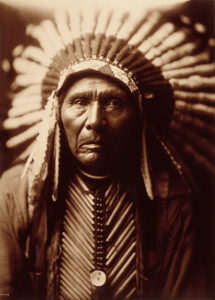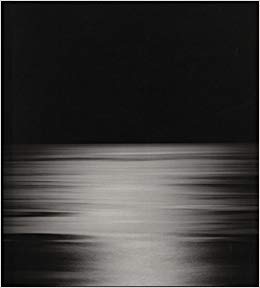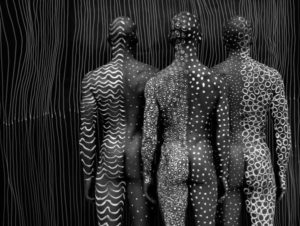Since photographs became a possibility in the 1830s we have become surrounded by them, never more so than in our digital age. How have we got here? How do we understand and react to the images we see? J and I ran a course for the U3A Cambridge this autumn to try to tease out some answers to these questions. We did not aim to deliver a formal history of photography. Rather we wanted to set the medium in its political, economic, social and technological contexts; and through that to show that there is no area of our lives where the impact and veracity of the photograph is unimportant.
We explored photography as: an aid to seeing the world differently; a way of engaging with society, politics and the economy; a voluntary and manipulated creator of self and identity; an art; and as a source of fact and fiction.
Week 1 Seeing The first session covered the following. 1. Before photography: cave paintings, drawings and the camera obscura. 2. First photographs: Niepce to Scott Archer and the wet-colloidion process. 3. Exploring the wider world: John Thompson to Edward Burtynsky. 4. Secrecy and exposure: war photography, photojournalism, spying and evidence. 5. Nature’s secrets: Muybridge’s Animal Locomotion to the Cassini space mission. 6. What we see – how we see: Strand, Cartier-Bresson and Cindy Sherman. 7. Communicating: mass media printing technology, magazines, picture stories and the web. 8. Seeing the past: a new way of making the past knowable.
Week 2 Society This class covered five topics. 1. Campaigning: from Lewis Hine to Friends of the Earth and Bruce Davidson to Green Peace. 2. The state: the work of the Farm Security Administration and Soviet and Nazi propaganda. 3. War reporting: Gerda Taro, Bert Hardy and Susan Meiselas among others. 4. Applied to life: medicine, industry, advertising and fashion etc. 5. Photojournalism: Life, Picture Post and the replacement of print outlets by the web and exhibitions.
Week 3 Image and Identity Starting with Foster Huntington’s Burning House, we looked at eight issues. 1. Before photography: mementoes and paintings. 2. The Arrival of photography: the studio, cartes de visite and outdoor pictures. 3. The image – portraiture: truth and manipulation, combat and collaboration in the work of Julia Margaret Cameron, August Sander, Arnold Newman, Jane Bowon, Zanele Muhuli, Cindy Sherman and others. 4. The image – on the street: Nan Goldin, Mahtab Hussain, and Jane Lynas. 5. Identity – who we are: identity cards, social events and recording rites of passage. 6. Managing the image: voluntary manipulation and media exploitation. 7. Social media: the selfie and what we reveal through our posts. 8. Memory and markers: family albums and family histories.
Week 4 Art and Photography Tackling the always challenging issue of photography as an art form and the photograph as a work of art was dealt with in two parts. 1. An art context: the general acceptance of photography as an art form; defining art; art and communication; emotional responses; combining imagination and skill; photography as an interpretation of the world; and the use of photography by artists working in other media. 2. A quiz: J introduced to the work of 32 practitioners who self-describe themselves as photographers, artists or artists using photography, ranging from Tacita Dean to Michael Wolf and Jane Bown to Hiroshi Sugimoto; each member of the class was given a sheet which posed the question ‘Are these photos art?’ and asked to rate them ‘Yes, ‘No’ or ‘Don’t know’. This resulted in a rather more animated debate than any of the previous sessions! The result from the quiz were reported back in week five.
Week 5/1 Art Quiz Feedback Twelve quiz sheets were completed. The unsurprising overall conclusions were: photography is an art form and a photograph can be a work of art; not all photography/photographs are art; and opinions differ widely. Work by the following ranked most highly as art: Hiroshi Sugimoto (11 ‘Yes’ out of 12), Bill Brandt (10), Sebastião Salgado (10), Sally Mann (10) and David Hockney (10). The highest scores as not art were given to: Michael Wolf (9 ‘No’ out of 12), Nan Goldin (9), Bernd and Hilla Becher (7), Seydou Keita (7) and Herlinde Koelbl (6).
Week 5/2 Ambiguity and Veracity The class looked at seven aspects of this. 1. The assumption of truth: the idea that the camera doesn’t lie. 2. The nature photography: how the decisions of the photographer and the editor influence what we see. 3. The intention to deceive: illustrated by the Cottingley fairies, William Mumler’s trickery and other doctored images. 4. The need for truth: the power of documentary photography covering war, climate change and other events depends on it being beyond challenge, e.g. Capa’s Loyalist Militiaman (1936). 5. Ambiguity: without supplementary information images may be ambiguous and open to different interpretations, e.g. Harry Gruyaert’s Quarzazate, Morocco (1982). 6. Between fact and fiction: the most effective photography sits between fact and fiction where the artist/photographer brings creative intelligence to the work, e.g. Robert Frank’s The Americans (1955-56). 7. Does it matter: does the truth behind Le baiser de l’hôtel de ville, Robert Doisneau, 1950, devalue it as a photograph?
At the end we might have asked: Whither or wither photography? Is belief in the truth of photography dead in a post-truth world? Does any truth need to be a worldwide truth? Are we looking for literal or eternal, spiritual truths in photography? Do we need different standards for ‘art’ and ‘documentary’ photography? We left the class with Jack Dracula at a bar, New London, Conn., 1961, by Diane Arbus and a quote from her: ‘A photograph is a secret about a secret. The more it tells you the less you know.’
Course stats The course was run over five alternate Fridays from 18th October to 13th December 2019. Eighteen people signed up; attendance was 81%. Presentations included 144 images from 116 named artists/photographers, plus 81 that were uncredited.





